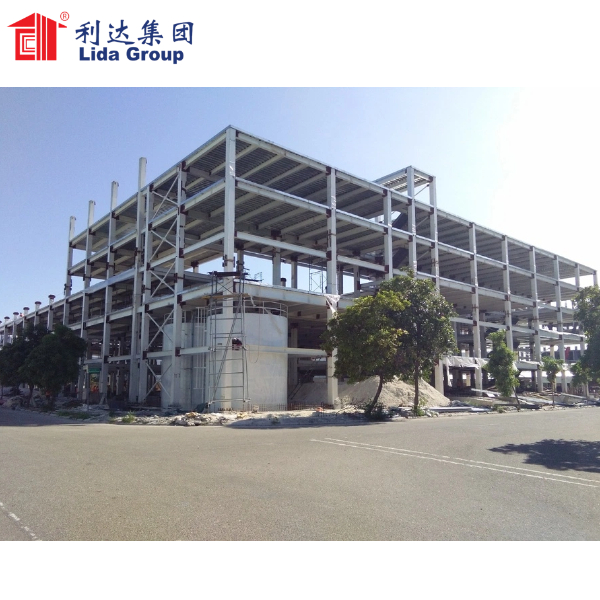Introduction
In today’s fast-paced world, the demand for efficient, durable, and scalable construction methods is more pressing than ever. Commercial steel structure houses, particularly in the form of prefabricated multi-storey buildings, offer a compelling solution to meet these demands. This article delves into the advantages, design considerations, applications, and future prospects of commercial steel structure houses, emphasizing their role in modern architecture and urban development.
Understanding Steel Structure Houses
Definition and Components
A commercial steel structure house is a building constructed primarily from steel components. These structures can be prefabricated, meaning that parts of the building are manufactured off-site and assembled on location. Key components include:
- Steel Frames: The backbone of the building, providing strength and stability.
- Panels: Pre-manufactured walls and roofs that can be easily installed.
- Foundations: Engineered bases that support the entire structure.
Types of Steel Structures
- Single-Storey Structures: Often used for warehouses and retail spaces.
- Multi-Storey Buildings: Ideal for offices, apartments, and mixed-use developments.
- Hybrid Structures: Combining steel with other materials for enhanced aesthetics and functionality.
Advantages of Prefabricated Steel Structure Buildings
Speed of Construction
One of the most significant benefits of prefabricated steel structures is the speed of construction. Key factors include:
- Reduced On-Site Time: Prefabrication allows for simultaneous site preparation and component manufacturing.
- Quick Assembly: Modular components can be rapidly assembled, significantly shortening the construction timeline.
Cost Efficiency
Prefabricated steel structures can lead to substantial cost savings:
- Lower Labor Costs: Reduced time on-site translates to lower labor expenses.
- Less Waste: Precise manufacturing processes minimize material waste.
Flexibility and Scalability
Steel structures provide excellent flexibility in design and usage:
- Adaptable Designs: Easily modified to accommodate changing needs.
- Future Expansion: Additional floors or sections can be added without extensive redesign.
Durability and Maintenance
Steel is known for its strength and longevity:
- Weather Resistance: Steel structures can withstand extreme weather conditions without compromising integrity.
- Low Maintenance: Steel requires minimal upkeep compared to traditional materials.
Design Considerations for Multi-Storey Buildings
Structural Design
Effective structural design is crucial for multi-storey steel buildings:
- Load-Bearing Capacity: Engineers must calculate loads from occupants, equipment, and environmental factors.
- Seismic and Wind Resistance: Designs should comply with local building codes for safety against natural disasters.
Aesthetic Appeal
Modern steel structures can be visually appealing:
- Versatile Facades: Steel can be combined with glass, wood, and other materials to enhance aesthetics.
- Creative Designs: Architects can explore innovative shapes and layouts, pushing the boundaries of traditional design.
Sustainability Features
Incorporating sustainable practices is increasingly important:
- Energy Efficiency: Use of insulated panels and energy-efficient systems reduces operational costs.
- Sustainable Materials: Sourcing recycled steel and utilizing eco-friendly construction methods.
Applications of Commercial Steel Structure Houses
Office Buildings
Steel structure houses are ideal for office spaces due to their:
- Open Floor Plans: Flexibility in layout allows for collaborative workspaces.
- Scalability: Easy to expand as the company grows.
Residential Buildings
Multi-storey steel structures can also serve as attractive residential options:
- Affordable Housing: Prefabricated options can reduce construction costs, making housing more accessible.
- Urban Development: Efficient vertical construction helps maximize limited urban space.
Retail Spaces
Retail environments benefit from the quick construction and adaptability of steel structures:
- Customizable Interiors: Retail spaces can be designed to suit various business models.
- Durable Environments: Steel provides a robust framework for high-traffic areas.
Industrial Facilities
Steel structures are commonly used in industrial settings:
- Warehouses and Distribution Centers: High ceilings and open spaces accommodate large inventories.
- Manufacturing Plants: Custom layouts can be designed for specific production needs.
Conclusion
Commercial steel structure houses, particularly in the form of prefabricated multi-storey buildings, represent a forward-thinking solution to contemporary construction challenges. With their speed of construction, cost-effectiveness, and sustainability benefits, they are well-suited for a variety of applications, from office buildings to industrial facilities. As technology advances and urbanization accelerates, the role of steel structures in shaping our built environment will only become more significant. Lida Group and similar manufacturers are poised to lead the way in delivering innovative, efficient, and durable solutions for the future of construction.
Contact Us
Post time: Jul-26-2024

